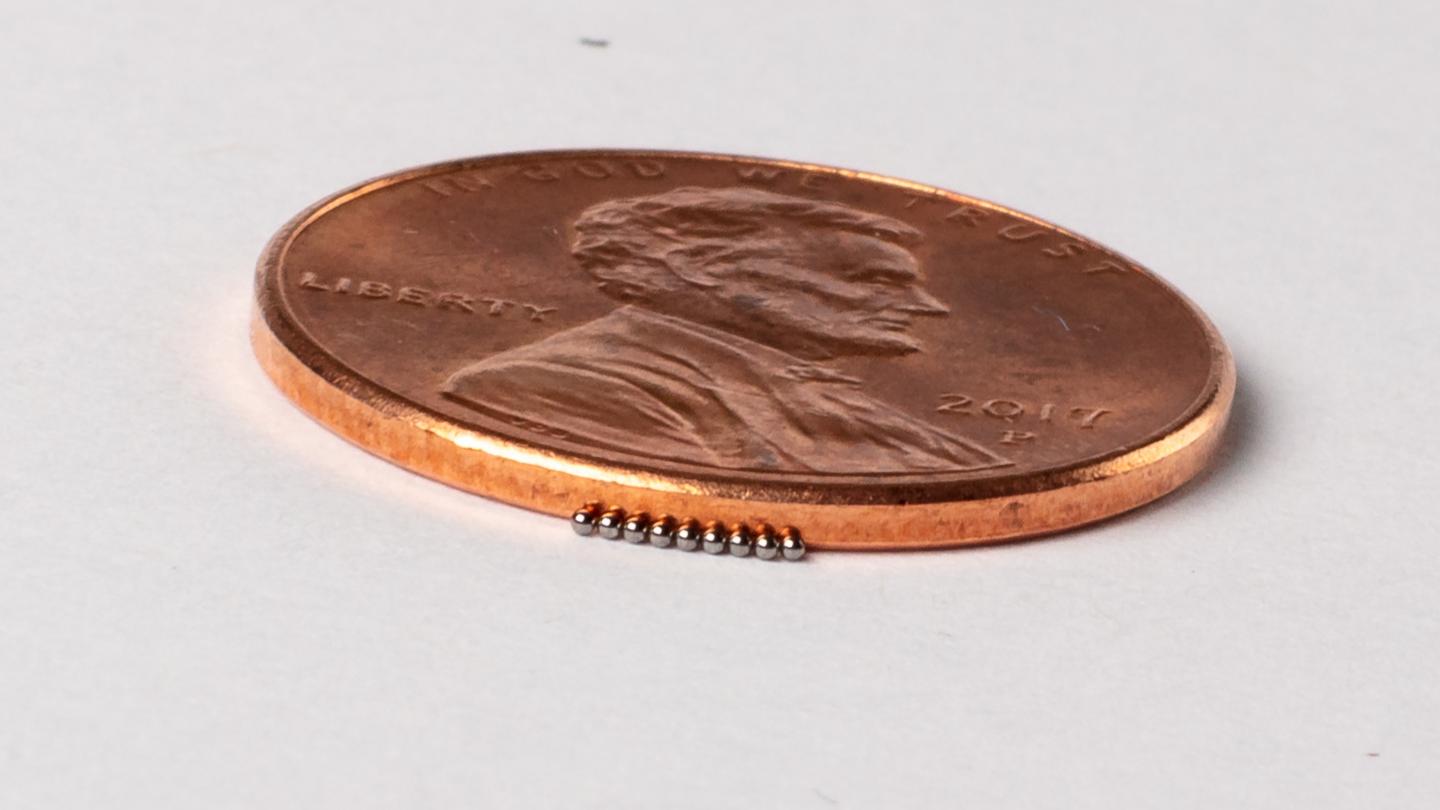
Credit: Carlos Jones/Oak Ridge National Laboratory, U.S. Dept. of Energy
Nuclear–Tiny test fuels
For the first time, Oak Ridge National Laboratory has completed testing of nuclear fuels using MiniFuel, an irradiation vehicle that allows for rapid experimentation. The compact experiment, which was irradiated at ORNL’s High Flux Isotope Reactor and then examined to see how the fuel responded, comprises a miniature target that holds pinhead-size fuel kernels. Conventional fuel tests use pellets with volumes more than 1,000 times that size. MiniFuel’s small size helps researchers better control variables and accelerate burnup conditions during irradiation. “Fuel performance testing is extremely complex, and it is difficult to interpret the data because so much is happening across the fuel pellet,” said ORNL’s Chris Petrie, who developed the concept. “With MiniFuel, we can isolate conditions, test specific fuel phenomena and acquire performance data much faster.” The first tests are focused on uranium nitride fuel for light water reactors–a fuel type lacking performance data. [Contact: Jason Ellis, (865) 241-5819; [email protected]]
Image: https:/
Caption: The ORNL-designed MiniFuel significantly decreases the size of fuel specimens and capsules that are irradiated in ORNL’s High Flux Isotope Reactor. The smaller experiments allow researchers to better control various conditions during irradiation and improve interpretation of data during post-irradiation examination. Credit: Carlos Jones/Oak Ridge National Laboratory, U.S. Dept. of Energy
Computing–Routing out the bugs
A study led by Oak Ridge National Laboratory explored the interface between the Department of Veterans Affairs’ healthcare data system and the data itself to detect the likelihood of errors and designed an auto-surveillance tool to help improve overall quality and safety. The team’s computing method can scan data for more than one million patients and push system error alerts for the VA to review and address. “Similar surveillance tools can detect human errors, but our major focus is routing out machine-generated errors that could lead to unintended consequences in health IT,” said ORNL’s Olufemi (Femi) Omitaomu, co-author of the published study. Feedback from the VA’s review informs improvements to the surveillance tool. The next phase will involve machine learning techniques for smarter, faster error detection. Over time, the VA’s platform will run more smoothly, accurately and efficiently in real-time, enabling a quicker response to potentially unsafe conditions in or functionality of health IT. [Contact: Sara Shoemaker, (865) 576-9219; [email protected]]
Image: https:/
Caption: An ORNL-developed computing method can scan data for more than one million patients and push system error alerts for the Department of Veterans Affairs to review and address. Part of ORNL’s computing team includes, from left, Ozgur Ozmen, Mohammed M. Olama, Mark Martin, Hilda B. Klasky and Olufemi A. Omitaomu. Credit: Carlos Jones/Oak Ridge National Laboratory, U.S. Dept. of Energy
Materials–Engineering heat transport
Scientists have discovered a way to alter heat transport in thermoelectric materials, a finding that may ultimately improve energy efficiency as the materials convert heat flow into electricity. Caltech theorists simulating the thermoelectric material lead selenide saw something surprising–a thermal wave that did not propagate. They determined the trick to potentially increasing energy efficiency in this material was to stop heat-carrying vibrational waves without thwarting electricity-bearing electrons. To verify the discovery, they called on experimentalists to probe a real crystal. “Vibrational waves stop propagating in a perfect crystal because of nonlinear interactions between phonons,” said Michael Manley of Oak Ridge National Laboratory. The experiment used neutron scattering at ORNL’s Spallation Neutron Source and the National Institute of Standards and Technology’s Center for Neutron Research and X-ray scattering at Argonne National Laboratory’s Advanced Photon Source. The discovery improves understanding of thermoelectric performance and may enable unconventional heat transport in future materials. [Contact: Dawn Levy, (865) 576-6448; [email protected]]
Image: https:/
Caption: In a perfect thermoelectric crystal, vibrational waves decompose and localize. A diagram of simulated phonon energy versus momentum reveals exactly where heat transport stops because of vibrations interfering nonlinearly–the flat band between the curved top and V-shaped bottom bands. Credit: Michael Manley/Oak Ridge National Laboratory, U.S. Dept. of Energy
###
Media Contact
Sara Shoemaker
[email protected]
Original Source
https:/
Related Journal Article
http://dx.




